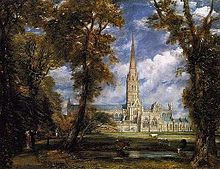13th-century Bishop of Ely (c.1180–1228)
| Geoffrey de Burgh | |
|---|---|
| Bishop of Ely | |
| Elected | June 1225 |
| Term ended | December 1228 |
| Predecessor | John of Fountains |
| Successor | Hugh of Northwold |
| Other post(s) | Archdeacon of Norwich |
| Orders | |
| Consecration | 29 June 1225 |
| Personal details | |
| Born | c. 1180 |
| Died | December 1228(1228-12-00) (aged 47–48) |
| Buried | Ely Cathedral |
| Denomination | Catholic |
Geoffrey de Burgh (English: /dəˈbɜːr/ də-BUR, French: [dəbuʁ]; c. 1180 – 8 December 1228) was a medieval English cleric who was Archdeacon of Norwich (1200–1225), Bishop of Ely (1215–1219, 1225–1228) and the brother of William de Burgh and Hubert de Burgh, 1st Earl of Kent.
Life
Geoffrey de Burgh was the younger brother of William de Burgh, Lord of Connacht, Hubert de Burgh, Earl of Kent, and Thomas de Burgh, Castellan of Norwich. He was born no later than 1180 or so (based on his appointment as archdeacon in 1200). The name of his father is not known, but his mother's name was Alice and the family were from Norfolk, being of knightly status. The name is likely in reference to either Burgh next Aylsham or Burgh Castle.

Geoffrey was Canon of Salisbury Cathedral and Treasurer of the Exchequer before being named Archdeacon of Norwich (1200). He was elected to the see of Ely (1215), but the election was quashed by Pope Honorius III before May 1219 due to a competing election with Robert of York. The pope quashed both elections, and ordered a new election: the monks chose the Cistercian John (Abbot of Fountains Abbey).

Geoffrey was once more elected to Ely (June 1225). He owed his election to his brother, Hubert (who was Justiciar of England at the time). He was consecrated Bishop of Ely (29 June 1225) and died three years later (between 8 December and 17 December 1228). He was buried in Ely Cathedral in the north choir, though there is no surviving tomb or monument. Besides his brothers, he also had a nephew, Thomas Blunville, who Hubert had elected to the see of Norwich in 1226.
Roger of Wendover told the story of a Geoffrey, Archdeacon of Norwich, who was a victim of King John of England's cruelty: Geoffrey was thrown into prison and fitted with a lead cloak and starved to death. However, this cannot be Geoffrey de Burgh since the bishop died many years after John's death. The historian Sidney Painter suggested that the real victim may have been another Geoffrey of Norwich, known to be a justice of the Jews.
Arms

|
|
See also
- House of Burgh, an Anglo-Norman and Hiberno-Norman dynasty founded in 1193
References
Citations
- ^ Karn "Burgh, Geoffrey de" Oxford Dictionary of National Biography
- Greenway Fasti Ecclesiae Anglicanae 1066–1300: Volume 2: Monastic Cathedrals (Northern and Southern Provinces): Norwich: Archdeacons of Norwich
- ^ Greenway Fasti Ecclesiae Anglicanae 1066–1300: Volume 2: Monastic Cathedrals (Northern and Southern Provinces): Ely: Bishops Archived 14 February 2012 at the Wayback Machine
- Fryde, et al. Handbook of British Chronology p. 244
- Sayers "Once 'Proud Prelate'" Journal of the British Archaeological Association p. 77
- Poole Domesday Book to Magna Carta p. 427 footnote 1
Bibliography
- Fryde, E. B.; Greenway, D. E.; Porter, S.; Roy, I. (1996). Handbook of British Chronology (Third revised ed.). Cambridge, UK: Cambridge University Press. ISBN 0-521-56350-X.
- Greenway, Diana E. (1971). "Ely: Bishops". Fasti Ecclesiae Anglicanae 1066–1300. Vol. 2: Monastic Cathedrals (Northern and Southern Provinces). Institute of Historical Research. Archived from the original on 14 February 2012. Retrieved 25 October 2007.
- —— (1971). "Norwich: Archdeacons of Norwich". Fasti Ecclesiae Anglicanae 1066–1300. Vol. 2: Monastic Cathedrals (Northern and Southern Provinces). Institute of Historical Research. Retrieved 25 October 2007.
- Karn, Nicholas. "Burgh, Geoffrey de". Oxford Dictionary of National Biography (online ed.). Oxford University Press. doi:10.1093/ref:odnb/95140. (Subscription or UK public library membership required.)
- Poole, Austin Lane (1955). From Domesday Book to Magna Carta, 1087–1216 (Second ed.). Oxford, UK: Clarendon Press. ISBN 0-19-821707-2.
- Sayers, Jane (2009). "A Once Proud Prelate: An Unidentified Episcopal Monument in Ely Cathedral". Journal of the British Archaeological Association. 162: 67–87. doi:10.1179/006812809x12448232842376.
| Catholic Church titles | ||
|---|---|---|
| Preceded byEustace | Bishop of Ely Election quashed 1215–1219 |
Succeeded byRobert of York |
| Preceded byJohn of Fountains | Bishop of Ely 1225–1228 |
Succeeded byHugh of Northwold |
| Bishops of Ely | |
|---|---|
| High Medieval | |
| Late Medieval | |
| Early modern |
|
| Late modern | |